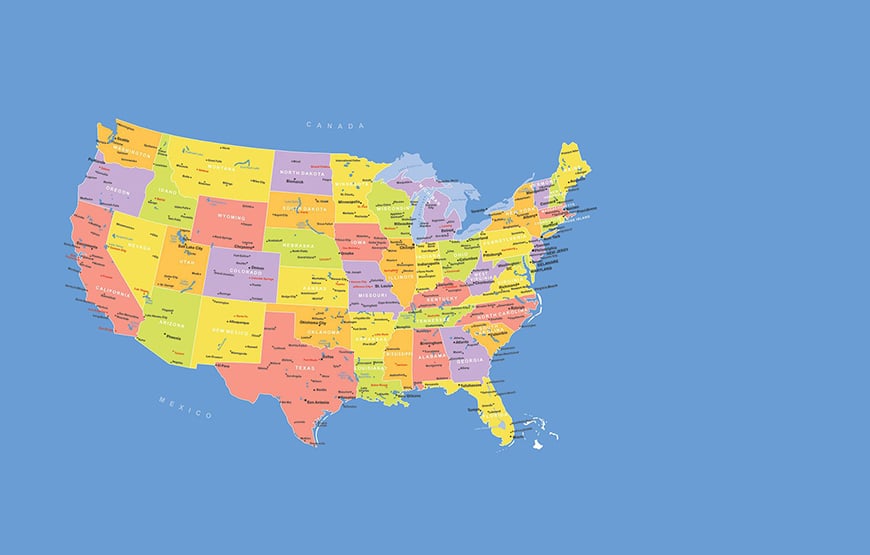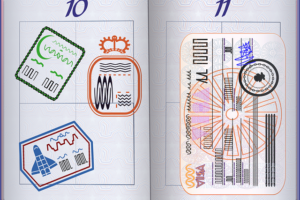Spring Semester Vs Fall Semester
- Posted by Edwise Foundation
- Categories Blog
- Date July 27, 2018

Academic Seasons: A Comparative Analysis of Spring and Fall Semesters
You know your interests, you know what you want to study, you know which university to study in USA, you know what you want to achieve, but often we find students stuckin making a simple decision- which semester to apply for:
Fall semester or Spring semester?
These two semesters, although part of same year, can differ in some areas. So, how are they different from each other and what are their specialties? Let’s see how to choose the best semester to apply for.
We know you are in a rush, you want to land in USA soon as possible. But few things are highly recommended to take into consideration before you choose the semester you want to apply for.
The universities in USA work independently; however, majority of them follow a two semester academic calendar- Fall and Spring semester.
Introduction to the Semester System

The semester system divides the academic year into two main semesters—fall and spring—each lasting approximately 15-18 weeks. Students enroll in 3-5 courses per semester and focus intensely on those subjects through finals week.
Compared to shorter 10-12-week quarters, semesters provide significantly more time for in-depth learning, knowledge absorption, skill development, and comprehensive evaluation.
Semesters allow professors to create immersive syllabi, impactful lessons, hands-on projects, and engaging discussions over the 15 weeks. Students can immerse themselves in a few courses at a time, interacting closely with professors and classmates throughout the term.
The extended calendar also readily accommodates intensive research, internships, study abroad, and other experiential learning programs. Overall, semesters effectively structure the academic year for profound learning and holistic student growth.
What Is Fall Semester?
Fall semester generally starts from August and runs till December, and is basically the first semester of an academic year.
To start with, let’s point out one of the most important things a student looks for while applying to an American university- the scholarship. A typical mindset most of Nepalese students have is that they get scholarships in Fall semester only and none in Spring.
Well, it might be true that higher number of scholarships are dispensed in Fall semester; scholarships such as full funding, full tuition for undergraduate and assistantships (full/partial) for graduate students.
Since it is the beginning of the academic year, the universities seem to have more funds available to provide scholarships. This is the semester in which you can apply for those huge scholarships to save some money of your parents.
But one thing students often forget is that those scholarships are mostly competitive and have some competitive requirements such as their academic grades/percentages and SAT scores.
Now, if one has not very high academic grades above and very low SAT score (eg: 65% and 1200 respectively), it does not make much sense waiting for August semester if you can still apply for Spring.
Similarly, if you have high academic grades (such as 75% or more and 1400 or more in SAT), you have some chances to get up to full tuition, if not full ride.
In the later case, if waiting for August means a huge chance of getting such huge funding, it is best to wait for August and get those scholarships because it will almost eliminate the burden or at least lessen your financial burden.
What Is Spring Semester?
Fall semester is followed by Spring semester, which is from January till May.
If the university does have funding available, Spring might have an equal number of scholarships. Mostly, Spring semesters do have some financial supports as well; it is very less likely to have full funding but basic scholarships and out-of-state tuition scholarships for undergraduate are still available in spring.
For graduate students, assistantships are provided in Fall and it can be not too easy to find one in spring; again depending on available funds. But again you do have to remember that they are highly competitive as well.
A person with 325 in GRE or 650 in GMAT along with 75% in Bachelor’s degree with plenty of working experiences is more likely to be chosen for an assistantship than one with 63% in academics and let’s say 300 in GRE or 400 in GMAT. But then, there are other things that come into big role play as well, such as your statement of purpose, letter of recommendation and other credentials.
Spring Semester Vs Fall Semester
One good thing about Spring semester is that you have the summer vacation coming right after the first semester when you get the opportunity to work on campus for full time and gain a full time working experience.
Spring semester might have smaller number of courses provided in comparison to the Fall semester.
Since Fall semester is the beginning of the academic year, it might have some pre-requisite classes that are not available in spring. It means you might not find equal number of classes in Spring since Classes are planned in the manner to start in Fall and continue in spring.
Another important thing to take into consideration is that not all universities have spring intake, which means you have lesser number of choices in choosing programs.
If you are looking for internships, one of the things you want to remember is that internships are provided in summer (May – August) and mostly you are required to have completed at least two semesters to qualify for them.
Basically if you apply for Spring 2019, you will have to wait for Summer 2020 to get summer internship opportunity.
Advantages of the Spring Semester
Starting the academic year in the spring semester provides several potential benefits:
- Warmer weather and increasing daylight as the semester progresses can positively impact mood, motivation, and energy levels. The milder conditions allow more outdoor physical activity.
- Housing prices and competition for off-campus apartments may be lower mid-year, with fewer students seeking leases. More affordable living options are available.
- For high school seniors making college decisions, knowing acceptances by April provides certainty about plans before committing to a school. Enrolling is easier.
- Finishing the spring semester in May allows time to start jobs, internships, or summer programs afterward. The schedule aligns well with summer opportunities.
- With fewer incoming transfer students in the spring, student crowds on campus and in the college, town are smaller, and classes are less packed. There’s a quieter ambiance.
- Spring break in March divides the long semester nicely, providing a much-needed week-long respite to recharge before the final stretch.
- Without the full first-year class enrolling, course registration and enrollment is simpler with expanded options and availability. Scheduling classes is easier.
- For students graduating high school in December, starting college with the spring semester facilitates a smoother transition right after finishing high school.
Disadvantages of the Spring Semester
However, there are also some notable drawbacks to beginning in the spring:
- There are fewer overall course offerings and sections in the spring schedule, limiting selection, especially for specialized classes.
- Most student clubs, organizations, campus events, intramural sports leagues, and social activities are already established and recruiting in the fall semester, making joining mid-year more difficult.
- Study abroad program opportunities are far more abundant for fall semester starts since spring programs must fit into a shorter summer break window. Options are limited.
- Internship recruiting and career fairs take place heavily in the fall semester to hire for coveted summer positions. Beginning the academic year in spring puts students behind in the internship timeline.
- Adapting socially and academically mid-year can be challenging for new students starting in spring without dedicated orientation programming and welcome events.
- Graduating at the end of the spring semester in December separates students from the main commencement activities and the graduating cohort in May.
- With a shorter winter break than summer, students have less time to relax and recharge between semesters. Burnout may happen faster.
Advantages of the Fall Semester
On the other hand, the traditional fall semester start offers several key benefits:
- Extensive orientation programming, including move-in help, social events, campus tours, workshops, and guidance, supports new students in college life.
- Warmer weather and sunshine in early fall make adjusting to a new environment easier before the cold and dark of winter set in.
- The full array of the university’s academic catalog and course offerings is available in the fall, providing maximum flexibility for enrollment and scheduling. Students can better meet requirements and customize schedules.
- Beginning required multi-course sequences in the fall enables students to complete them on time over 4+ years. There is less pressure on course sequences.
- Most prestigious internship opportunities, career fairs, and employer recruiting happen early in the fall semester. Starting in the fall maximizes chances for summer positions.
- Study abroad, undergraduate research, and service-learning programs predominantly have fall start dates. Fall enrollment provides more options to gain experience.
- Joining existing fall-formed clubs, intramural teams, and campus organizations helps students quickly find their niche and make friends with shared interests.
- Major fall events like football games, festivals, concerts, and more provide memorable experiences and foster school spirit.
Dreaming of Studying Abroad? Take the First Step with a FREE Consultation!
Disadvantages of the Fall Semester
However, the fall start also has some drawbacks:
- Adjusting to increased academic rigor and pace and college living right after summer can feel abrupt and disorienting. Easing into college is more complicated.
- A shorter 2-3-week winter break provides far less time for students to decompress and recharge than a 3-4-month summer break. Burnout and stress compound faster.
- Packing final exams right before the short winter holidays leads to exhaustion and anxiety at a time of relaxation. Students may sacrifice self-care to cram.
- The mass of new students arriving for the fall semester makes enrollment, advising, housing, and other services extremely competitive and stressful. Crowds exacerbate homesickness.
- After 3+ months off for summer, students may be out of an academic rhythm, making resuming vigorous studying and time management harder when starting fall classes.
- Chilly late fall and winter weather and less sunlight can negatively impact mood and motivation as the semester progresses. Seasonal depression sets in.
Why join the spring semester?
- Warmer, sunnier weather improves mood and motivation
- Lower housing costs and availability
- Enrollment certainty for high school seniors after acceptances
- Aligns with summer jobs/internships
- Smaller campus crowds
- Spring break divide
- Wider course availability
- Easier transition for December high school graduates
Why join the Fall semester?
- Extensive orientation programming
- Warmer weather in early fall
- The full course catalog is available
- Can sequence multi-term courses
- Aligns with internship hiring cycles
- More study-abroad options
- Established social activities
- Major fall events and traditions
Conclusion: Spring Semester Vs Fall Semester
While spring starts offer some situational benefits, the fall semester provides important transitional programming while aligning with academic courses, experiential learning opportunities, and social integration.
Students can plan their academic paths accordingly and thrive in either semester by understanding these advantages.
slower pace going into summer—the traditional fall start facilitates important transitions for new students while aligning the academic calendar with major experiential learning opportunities.
Students find connection and success in either semester by strategically utilizing orientation resources and planning academic paths.
Dreaming of Studying Abroad? Take the First Step with a FREE Consultation!
Lorem ipsum dolor sit amet, consectetur adipiscing elit. Ut elit tellus, luctus nec ullamcorper mattis, pulvinar dapibus leo.
Tag:Course
Edwise Foundation is your dedicated abroad education partner. We are more than an education consultancy; we're your route to international education. We have a long history of guiding ambitious young minds. Our extensive experience in counseling abroad studies and smooth application processing makes it easier for students to achieve their academic goals.
f i y t n
You may also like

Best Universities to Study Computer Science in The UK


